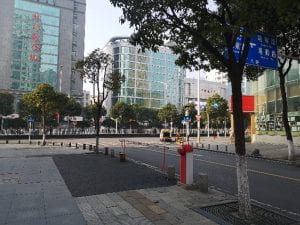One of the sampling methods commonly used in fieldwork is the snowballing technique. The method is to recruit the next research participants by asking current participants to help researchers in identifying potential participants, which is a kind of referral system. I took advantage of the method in my preliminary fieldwork last year. My generous interviewees gladly introduced me to someone they knew and sometimes took me directly if it was not far away from their places. Yet, COVID-19 changed everything.
The goal of my fieldwork this summer was to compare the two largest strawberry production regions in South Korea. I was supposed to participate in farm conferences and local education programs to recruit farmers for interviews and then apply the snowballing technique. However, most of those gatherings were canceled due to the virus. Even if there were meetings, they were held behind closed doors. I had no choice but to conduct “un-immersive fieldwork,” relying on cold calling from my rented studio in Seoul.
Three strategies that got me through this challenge were calling organizations’ representatives, virtual snowballing, and random calls.
Calling organizations’ representatives: There are several farmers’ organizations in the Korean strawberry sector (i.e., cooperatives, agricultural corporations, and strawberry research groups). The contact information for the organizations’ representatives is often posted on the government’s website, making it easy to make contact. Also, the representatives are usually more likely to be extroverted. If things went well, an interviewee was interviewed by phone while they were driving long distances, enabling in-depth interviews to take place over one to two hours. In the worst-case scenario, however, the interviewee was not able to answer questions properly, because they were on their way to visit a hospital or bank. One-third of the potential interviewees declined to be interviewed, refusing in the same manner as they would with spam calls. They said, “I don’t do such a thing. Sorry.”
Virtual snowballing: At the end of every telephone interview, I asked interviewees to introduce me to another close farmer. They were a little reluctant to introduce another farmer than I expected, and said, “Other farmers will say the same anyway.” This was in contrast to the welcome introduction of the surrounding farmers during the in-person visits last year. Meanwhile, experts (researchers, technicians, etc.) and government officials whom I met in person last year gladly introduced farmers they knew this year. I guess people become willing to introduce me to other people when they are sure that an interviewer is reliable and the introduction will not harm their reputations.
Random calls: I tried random calls to various farmers through a Google search. Usually, farmers who left their contact information on the Internet were selling agricultural machinery and fertilizers or running pick-your-own strawberry farms in addition to farming, and most of them willingly accepted the interview request. They answered my questions as comfortably as they treated their customers. I also posted a promotional post on the web communities for strawberry farmers, hoping to coax the farmers to call me. Despite the offer of compensation, only a small number of farmers contacted me. Interestingly, they had something in common in that they felt sorry for Ph.D. students because they or their children had graduate school experience.
In the COVID-19 era, while many people are getting used to new technologies such as Zoom, there remain difficulties in applying these technologies to fieldwork. The use of video calls or online messaging platforms was almost impossible, especially since farmers are of high average age and are usually conservative. Nevertheless, there must be huge room for improvement: a more friendly way of phone calls, writing an attractive promotional post, and many more creative methods. We keep learning how to adapt to uncertainties by doing everything in the virtual field.
As mentioned, there is always room for improvement, and I welcome new ideas. Please feel free to contact me if you have any suggestion for my virtual fieldwork!
Sohyun Park, PhD Candidate











